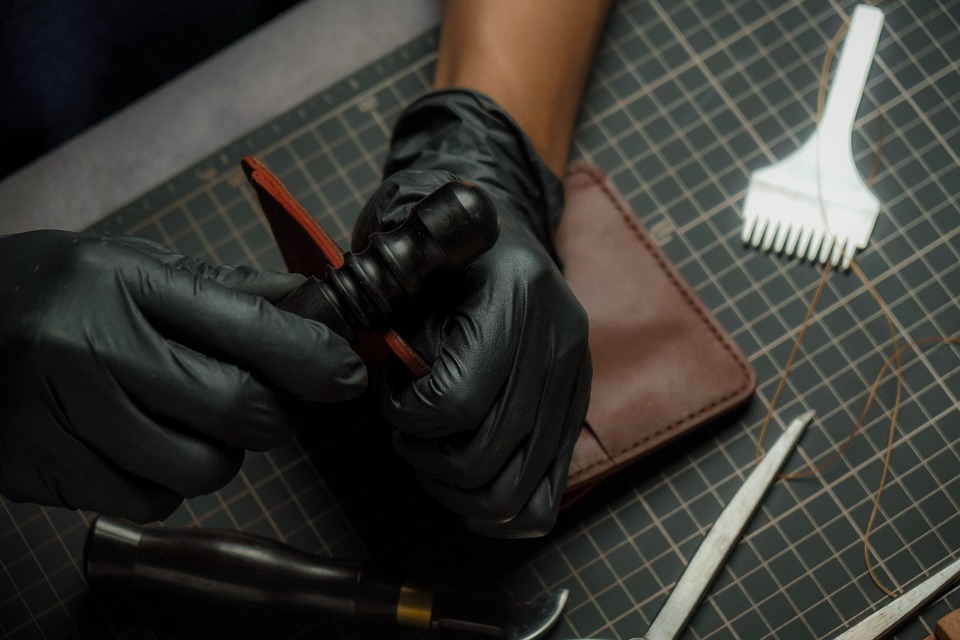In an era dominated by digital payments and contactless transactions, it’s ironic that leathercraft, a traditional and tactile craft, has experienced a significant resurgence. The rise of artisanal wallets, in particular, has captured the attention of consumers seeking unique, high-quality, and sustainable products. This phenomenon is not limited to a niche market; it has become a mainstream trend, with many enthusiasts and collectors seeking out handmade leather goods. In this article, we’ll explore the factors contributing to the leathercraft revival, the characteristics of artisanal wallets, and what the future holds for this industry.
The Resurgence of Leathercraft
Leathercraft has been around for centuries, with evidence of leather production dating back to ancient civilizations. However, with the advent of synthetic materials and mass production, the craft of leatherworking slowly declined. The rise of fast fashion and disposable consumerism further contributed to the decline of traditional craftsmanship. Nevertheless, in recent years, there has been a growing interest in handmade, unique, and sustainable products. This shift in consumer values has created a fertile ground for the revival of leathercraft.
Several factors have contributed to the resurgence of leathercraft. The increasing awareness of environmental issues and the need for sustainable products has led consumers to seek out natural, eco-friendly materials like leather. Additionally, the digital age has created a sense of detachment and disposability, prompting people to crave tangible, meaningful products that tell a story. Artisanal leather goods, with their emphasis on quality, craftsmanship, and uniqueness, have become a antidote to the homogenization of mass-produced products.
The Characteristics of Artisanal Wallets
Artisanal wallets are characterized by their exceptional quality, attention to detail, and unique design. Unlike mass-produced wallets, artisanal wallets are handmade by skilled craftsmen who carefully select and cut high-quality leather, often using traditional techniques passed down through generations. The leather used is typically full-grain, top-grain, or vegetable-tanned, which ensures a natural, rich patina that develops over time.
The design of artisanal wallets is often minimalist, functional, and elegant, with clean lines, simple stitching, and a focus on usability. Many artisans draw inspiration from classic designs, updating them with modern materials and techniques. The wallets are designed to be used and cherished for years, with some artisans offering repairs and conditioning services to extend the life of the product.
One of the defining features of artisanal wallets is the human touch. Each wallet is unique, bearing the marks of the craftsman’s hands, from the subtle irregularities in the stitching to the quirks of the leather. This human element creates an emotional connection between the owner and the wallet, making it more than just a functional item – it becomes a treasured possession.
The Rise of Independent Artisans
The internet and social media have democratized the way artisans showcase and sell their work. Independent artisans can now connect directly with customers, sharing their stories, showcasing their craftsmanship, and selling their products without intermediaries. Platforms like Instagram, Etsy, and Kickstarter have created a global marketplace for artisanal goods, allowing small-scale producers to reach a wide audience.
This shift has enabled a new generation of artisans to emerge, many of whom are passionate about preserving traditional techniques while innovating and pushing the boundaries of leathercraft. These independent artisans often collaborate with each other, share knowledge, and experiment with new materials and designs, creating a vibrant and dynamic community.
The Future of Artisanal Wallets
The demand for artisanal wallets is expected to continue growing, driven by consumers seeking unique, high-quality, and sustainable products. As the market expands, we can expect to see new designs, materials, and techniques emerge, as well as increased collaboration between artisans and brands.
The rise of artisanal wallets also raises important questions about the future of craftsmanship and the role of technology in traditional industries. While automation and digital tools can enhance efficiency and precision, they also risk homogenizing the craft and diminishing the human element that makes artisanal goods so special.
To balance innovation with tradition, many artisans are embracing digital tools to enhance their craft, such as computer-aided design, 3D printing, and social media marketing. By leveraging technology, artisans can increase their reach, streamline their production, and focus on the creative aspects of their


